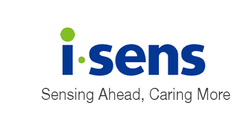
How Does the Body Make, Use, and Store Glucose?
Glucose is a type of monosaccharide, the simplest form of carbohydrate and the universal source of energy.1 The level of glucose streaming through the blood is highly regulated by various processes in the body.2,3 This state and process of maintaining a steady biological equilibrium is referred to as the glucose homeostasis and involves vital metabolic processes.
How Does the Body Make Glucose During Fasting State?
When the body is in a fasting state and experiences a drop in blood glucose levels, certain hormones are released to synthesize glucose and normalize its levels.2 For instance, when glucagon is released by the pancreatic alpha cells, it primarily acts on the liver to produce glucose molecules through processes called glycogenolysis and gluconeogenesis.
Glycogenolysis – Glycogenolysis is the scientific term for breaking up (“lysis”) glycogen molecules. Glycogen is a polysaccharide, a form of carbohydrate, that functions as an energy reserve mostly in the liver and muscles tissues.4 When blood glucose levels drop during fasting state or when muscles need extra glucose needed for contractions, the body signals the need for glycogenolysis to break down glycogen into glucose. Hormones such as glucagon, catecholamines, and glucocorticoids trigger glycogenolysis.
Gluconeogenesis – Gluconeogenesis is the technical term that describes the “neogenesis” (“newly making”) of glucose. It is another vital process to maintaining blood glucose levels during fasting states and provides glucose to various organs, especially the brain, eyes, and kidneys that rely solely on glucose for energy supply during short-term fasting states.5,6 Hormones such as glucagon, catecholamines, growth hormone, and cortisol promote gluconeogenesis.
How Does the Body Use and Store Glucose During Fed State?
On the other hand, when the body is in a fed state and experiences a rise in blood glucose levels, certain hormones are released to use glucose and store its excess.2 For instance, when insulin is released by the pancreatic beta cells, it primarily acts on the liver, muscle, and adipose (i.e., fat) tissues to use or store glucose molecules through processes called glycolysis and glycogenesis.
Glycolysis – Glycolysis is a process that describes the breakdown (“lysis”) of glucose molecule for energy use. It is the primary means of providing energy in nearly all living organisms and occurs constantly in the body.7 Glycolysis is the reverse process of gluconeogenesis.
Glycogenesis – Glycogenesis describes the “genesis” (“making”) of glycogen molecules for storage. When not all the glucose from energy intake can be used and an excess is available for future storage, glycogen is formed from glucose molecules through glycogenesis.8 Insulin and other liver derived factors promote glycogenesis.2
|
References: |
(Disclaimer)
The content of this article is intended to provide a general information and knowledge on the subject matter. The views expressed in newsletters, articles, and blogs in the i-SENS USA website are not necessarily those of i-SENS Incorporated, i-SENS USA Incorporated or our publishers. Medical or nutritional information on i-SENS USA website is not intended to replace professional medical advice – you should always consult a specialist with any questions about your specific circumstances.





Add a comment